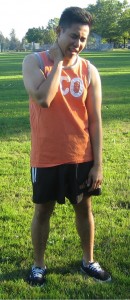Bone spurs are basically bony protuberances that can form in any part of the bone, but specifically in the joints or where the tendons and ligaments attach to the bones. Bone spurs or osteophytes do not hurt but can trigger pain once they rub against surrounding bones or nerves, resulting to pain and discomfort.
http://youtu.be/XLveRJzxkOo
Since bone spurs do not have symptoms, they are not discovered until an X-ray is taken due to other reasons. Due to this, bone spurs are not removed, except if connected to a treatment for an underlying issue that caused them in the first place.
Location where bone spurs develop
Even though bone spurs can develop anywhere, some can grow in specific locations which determine the symptoms that will manifest. The bone spurs that develops in the knee can make it difficult and painful to bend or extend the leg.
Bone spurs that develop in the spine causes the compression of the nerves. This results to pain or numbness in another part of the body. As for bone spurs in the neck, they can press inward, making it difficult for the individual to breathe or swallow as well as cutting off the flow of blood to the brain.

In case they develop in the shoulder, it can limit the range of movement of the individual. They can also rub against the tendons of the rotator cuff, resulting to inflammation. Lastly, if the bone spurs develop in the fingers, they appear as small-sized, bony bumps that can sometimes cause pain.
What are the possible causes?
The common cause of bone spurs is osteoarthritis. The condition basically breaks down the cartilage in the joints and bone spurs develop as a way to compensate. The bone spurs can form independently and considered as part of the aging process even among those who do not have osteoarthritis.
There are certain conditions that can also lead to the development of bone spurs. The condition called as diffuse idiopathic skeletal hyperostosis (DISH) can cause bony protrusions on the ligaments of the spinal cord. The bone spurs that develop if an individual has spinal stenosis will constrict the spinal cord, adding force on the spinal cord.
Plantar fasciitis is considered as a bone outgrowth that develops where the connective tissue connects the heel on the base area of the foot. Take note that it is the annoyance of the tissue, not the spur that causes pain.
Treatment
If the bone spurs do not cause pain, treatment would not be required. In case the doctor will treat the condition, it might involve the underlying issue that caused the bone spurs. For pain relief, NSAIDs are recommended. By enrolling in a first aid course, you will learn other ways to effectively manage pain in similar conditions. In case surgery is an option, it might be done in connection with arthritis that can be an open surgery.
